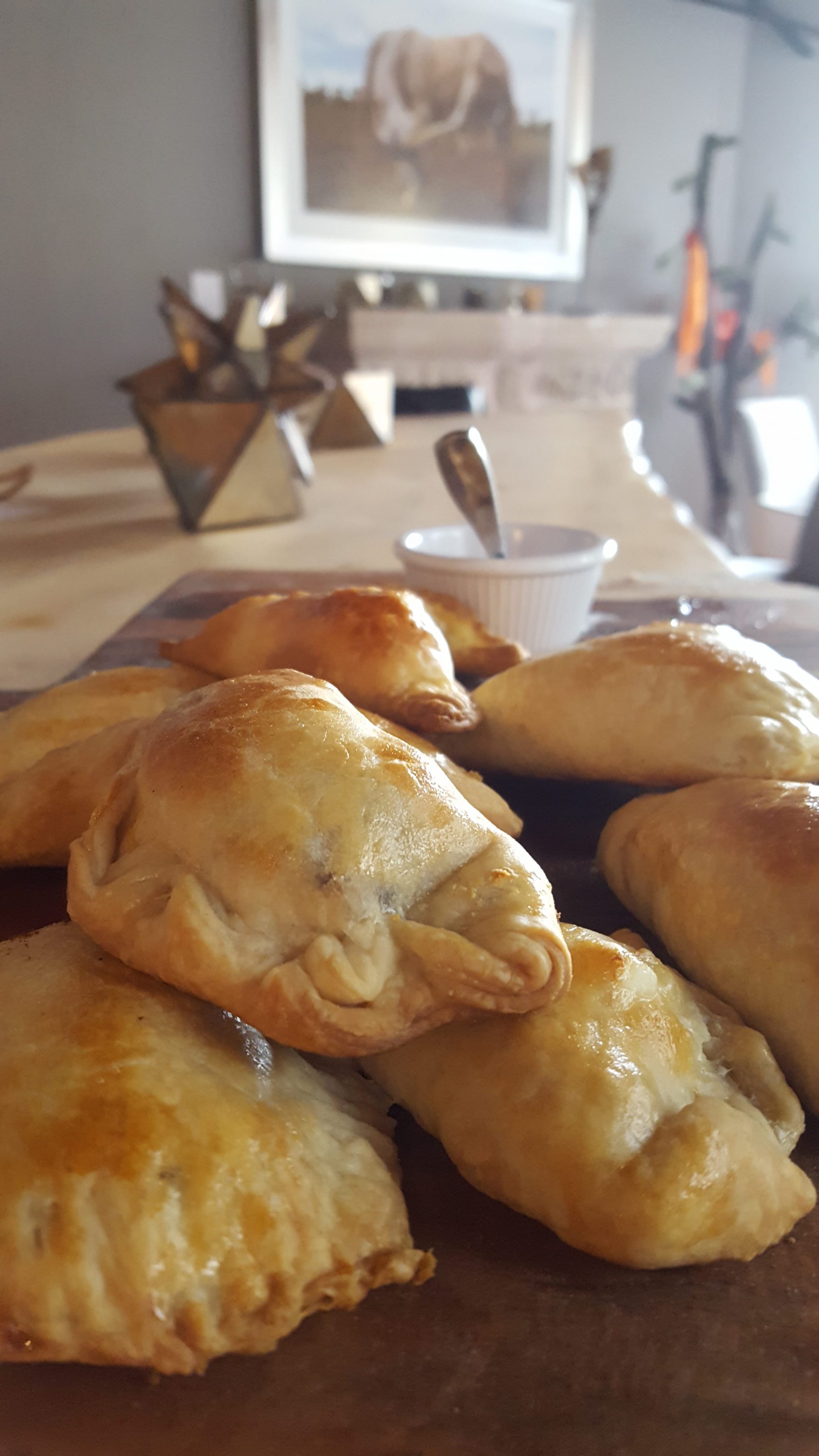→Empanadas are stuffed pastries that are very popular in South America. Empanadas probably came to South America with the Spaniards, but they quickly took on their own distinctive style and flavor in the New World. South American empanadas often have a slightly sweet dough that works as a perfect contrast to the savory filling.
→Empanadas might look the same from country to country in South America, but there are distinct differences in each region. Most countries have a basic beef empanada and or vegetarian version.
They have a tender dough that tends to soak up the flavor of the filling, making them even more delicious the day after they are baked. The dough is less flaky than pie crust, and it’s very simple to make.
→Empanadas reheat well in the microwave without losing their texture.- Making perfect empanadas is a skill that takes much time and practice. The good news is that even ugly empanadas taste good.
- Empanadas can be baked or fried. They are typically large enough to be a meal, but can also be made into a small, appetizer-size version.
- Let the dough and the filling rest overnight in the refrigerator. Everything will work better—the dough will relax and lose its stretchiness and the filling will be chilled and less runny.
- After you roll out the dough, let it rest on the counter for at least 5 minutes before you cut out the circles of dough. If the dough is relaxed, the dough circles will maintain their shape and will not shrink when you cut them out. Roll the dough out to about 1/4 inch thickness (about like a sugar cookie) for smaller empanadas, and a little bit thicker for bigger empanadas that are going to hold more filling.
Although you do want plump, well-stuffed empanadas, it’s important not to overfill them. You’ll end up with filling that leaks out when baked in the oven, making a mess.
Place a proportional amount of filling in the center of the dough circle, making sure you have a clean margin of dough all the way around. Try not to spill the filling onto the edges of the dough. The fat in the filling will make the edges of the dough greasy and they won’t be able to seal together well.
Hold the circle of dough in the palm of the hand and fill the empanadas while cradling them. That can help you judge the proper amount of filling because the empanada dough will fold around the filling and you can see exactly how much it can hold.
SEALING: Dip your finger in a bowl of water and run your finger along the entire edge of the circle of dough, lightly dampening it. Fold the empanada in half, enclosing the filling, and press the edges together firmly all the way around, lengthening and thinning them slightly as you press them together. Take the time to perform this step carefully, as it will prevent the filling from finding ways to leak out in the oven during baking.
BRAIDING: There is an easy way to crimp the edge of an empanada just by using the tines of a fork. A fork-crimped edge is so common on fried empanadas that when you see an empanada like that, you can almost assume it’s fried. The traditional braided edge, or repulgue, is more common on baked empanadas.
To fold the repulgue, think of triangles. Start at one corner of the empanada, and fold a triangle of dough from the seal edge down over itself. Press down to seal it, extended that part of the dough a bit as your press on it, and fold down a second triangle right next to the first. Press it down to seal and repeat, continuing all the way around the edge. The last triangle can be tucked underneath the edge if necessary. Some people like to pinch and fold the triangles between the thumb and first finger of one hand while cradling the empanada in their other hand.
- BAKE IT: Place the sealed empanadas on a baking sheet and brush them generously with an egg wash (egg yolk mixed with a little bit of water). Be sure to coat all exposed parts of the empanadas with an even coat of the egg wash.Place the empanadas in a preheated 400 F oven. Bake them until they are puffed and golden brown.
Empanadas can be eaten warm or at room temperature. You can freeze them to enjoy later. If you freeze them, reheat them in the oven on low heat. You can reheat them in the microwave, but the crust will be less flaky.


